
Madrina
Madrina is, at its simplest, the latest reason to visit the Distillery District. The much-anticipated Catalan tapas restaurant joins the select few of its kind in the city, and like most well-funded Spanish endeavours, its menu and design don't disappoint.
Sitting in a historic cornerstone of the Distillery District's main square, the restaurant fuses old and new by making good use of the century-old Victorian building that once housed Tappo Wine Bar. In true Catalan style the interior is equal parts whimsy and class.
 Studio Munge hits home once again with an airy design complete with a 37-foot bar, open kitchen and handmade terracotta tiles. Custom drawings from LA-based Mattea Perrotta line the seating area while ceramic pieces from Brazilian potter Eny Lee Parker accent the space.
Studio Munge hits home once again with an airy design complete with a 37-foot bar, open kitchen and handmade terracotta tiles. Custom drawings from LA-based Mattea Perrotta line the seating area while ceramic pieces from Brazilian potter Eny Lee Parker accent the space.
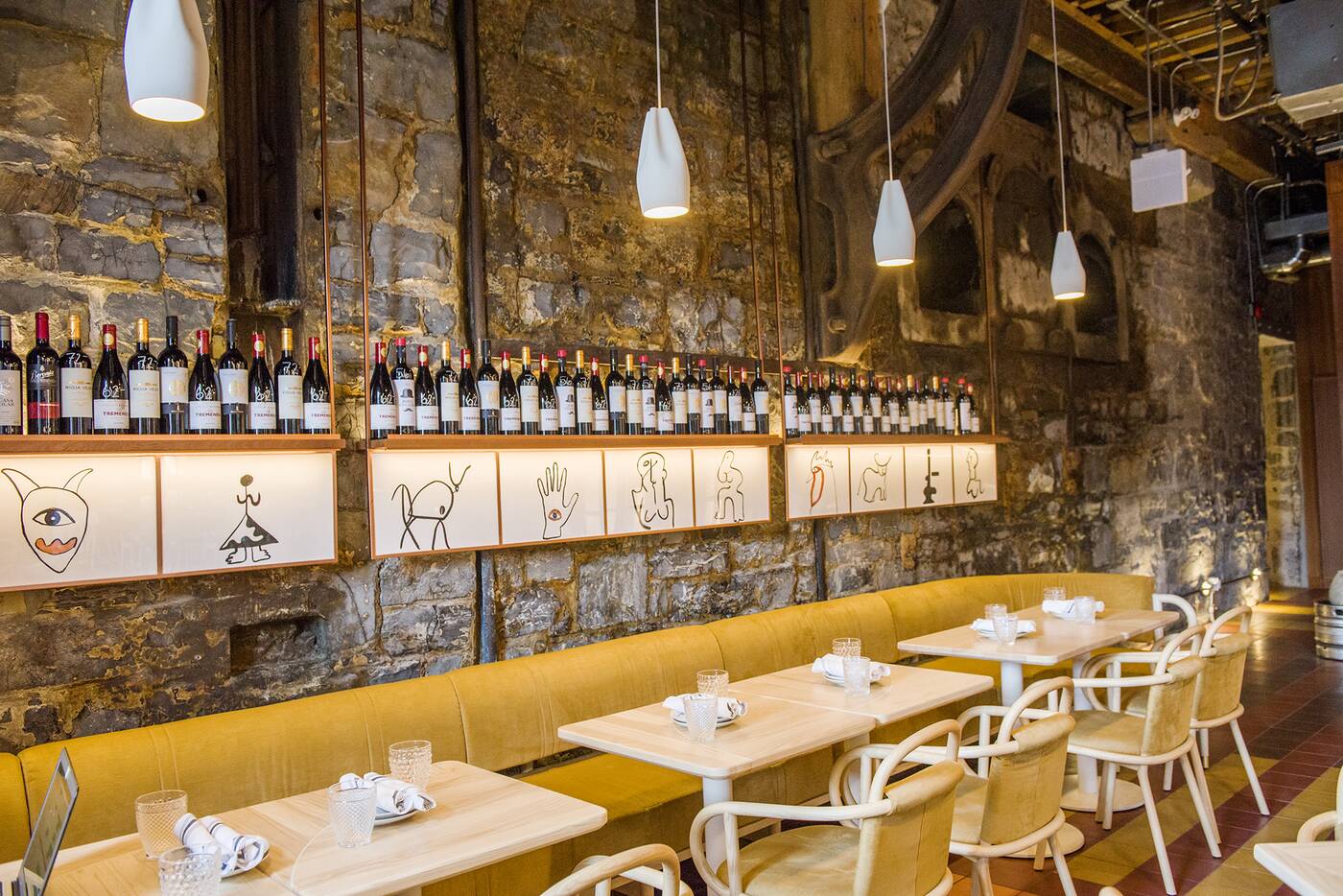 But Madrina's real main feature is its executive chef. The Distillery District Restaurants Corp. — behind Cluny, Pure Spirits, El Catrin, and Archeo — have struck out with Chef Ramon Simarro helming the kitchen.
But Madrina's real main feature is its executive chef. The Distillery District Restaurants Corp. — behind Cluny, Pure Spirits, El Catrin, and Archeo — have struck out with Chef Ramon Simarro helming the kitchen.
 The gastronomist from Catalonia has moved his way through multiple Michelin-starred restaurants (Raco de Can Fabes, Alkimia), launching his own project 1477 in Hotel Camiral before moving to Toronto this year to head one of this summer's most exciting openings.
The gastronomist from Catalonia has moved his way through multiple Michelin-starred restaurants (Raco de Can Fabes, Alkimia), launching his own project 1477 in Hotel Camiral before moving to Toronto this year to head one of this summer's most exciting openings.
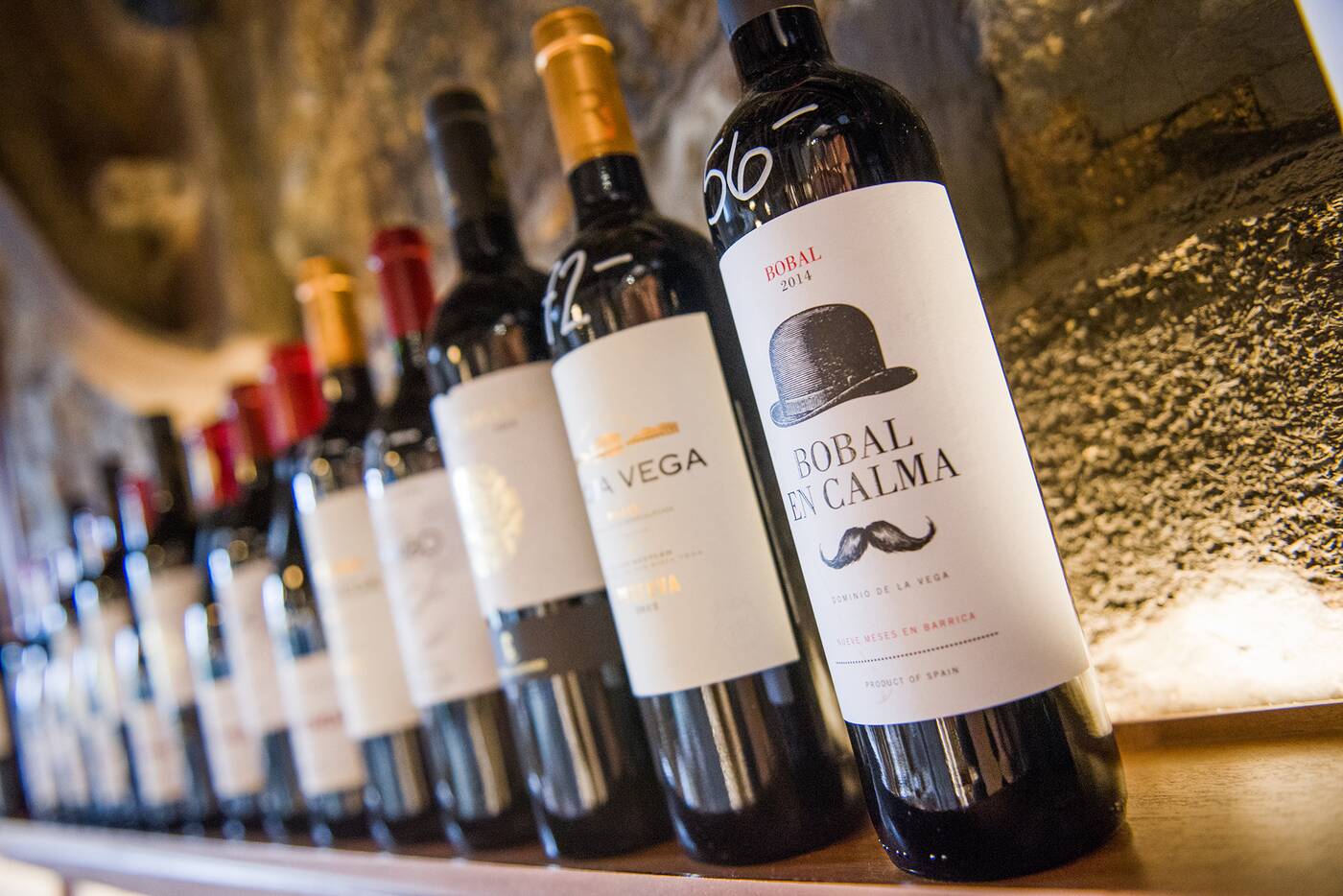 His traditional meets-modern menu is separated into nine sections, from canned seafood to pintxos to cheeses from La Mancha, Basque Country, and Simarro's current favourite: the semi-cured mahón from the Balearic Islands ($16 per 75 grams).
His traditional meets-modern menu is separated into nine sections, from canned seafood to pintxos to cheeses from La Mancha, Basque Country, and Simarro's current favourite: the semi-cured mahón from the Balearic Islands ($16 per 75 grams).
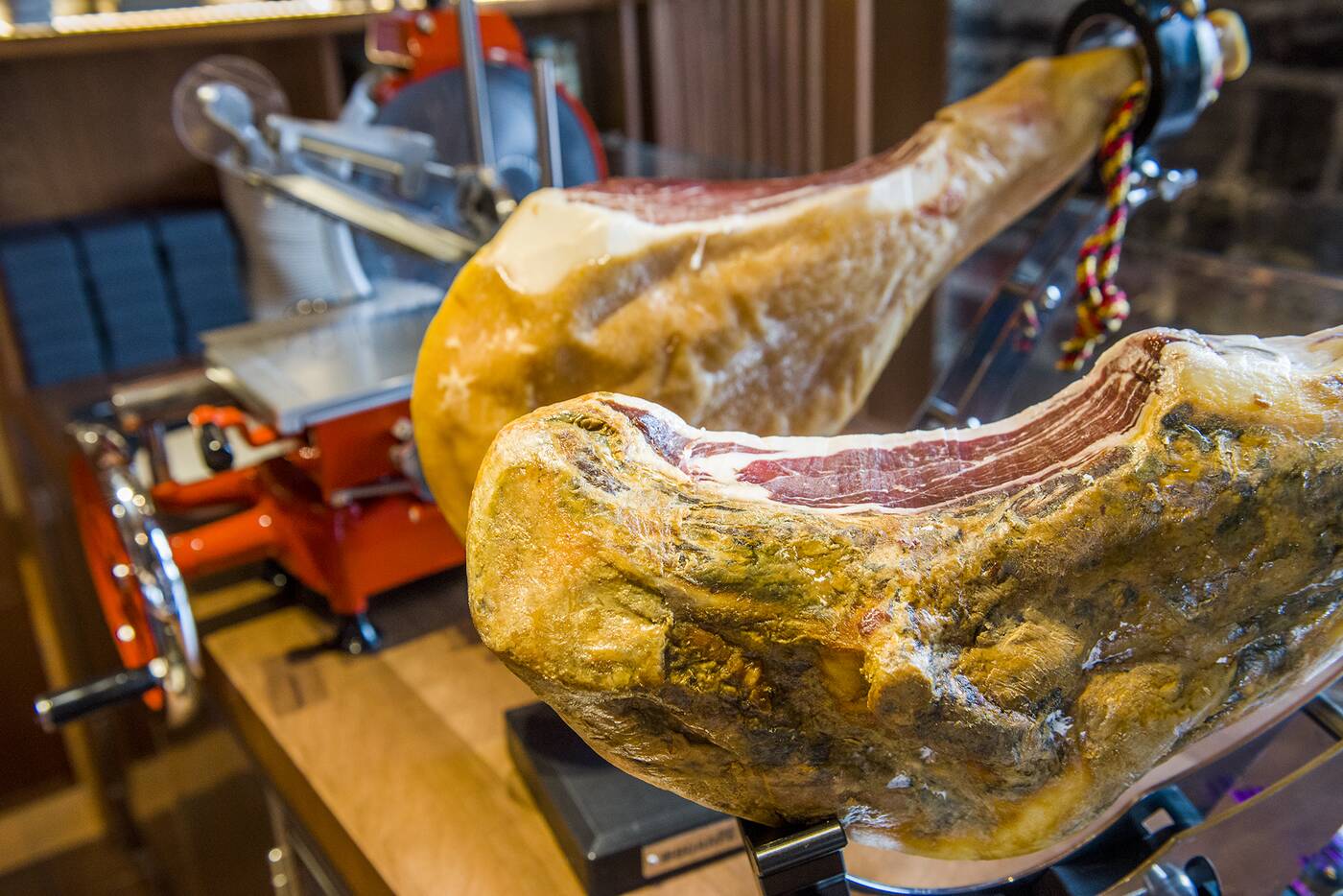 Near the entrance you'll find hulks of ham, all Iberian, which make up the hand-carved charcuterie boards.
Near the entrance you'll find hulks of ham, all Iberian, which make up the hand-carved charcuterie boards.
 For anyone who never had the wherewithal — or the funds — to travel to Spain to try the iconic modern restaurant and prized Catalan gem El Bulli, you're in luck: Simarro's Madrina menu pays homage to the now-closed Michelin starred restaurant in a variety of ways.
For anyone who never had the wherewithal — or the funds — to travel to Spain to try the iconic modern restaurant and prized Catalan gem El Bulli, you're in luck: Simarro's Madrina menu pays homage to the now-closed Michelin starred restaurant in a variety of ways.
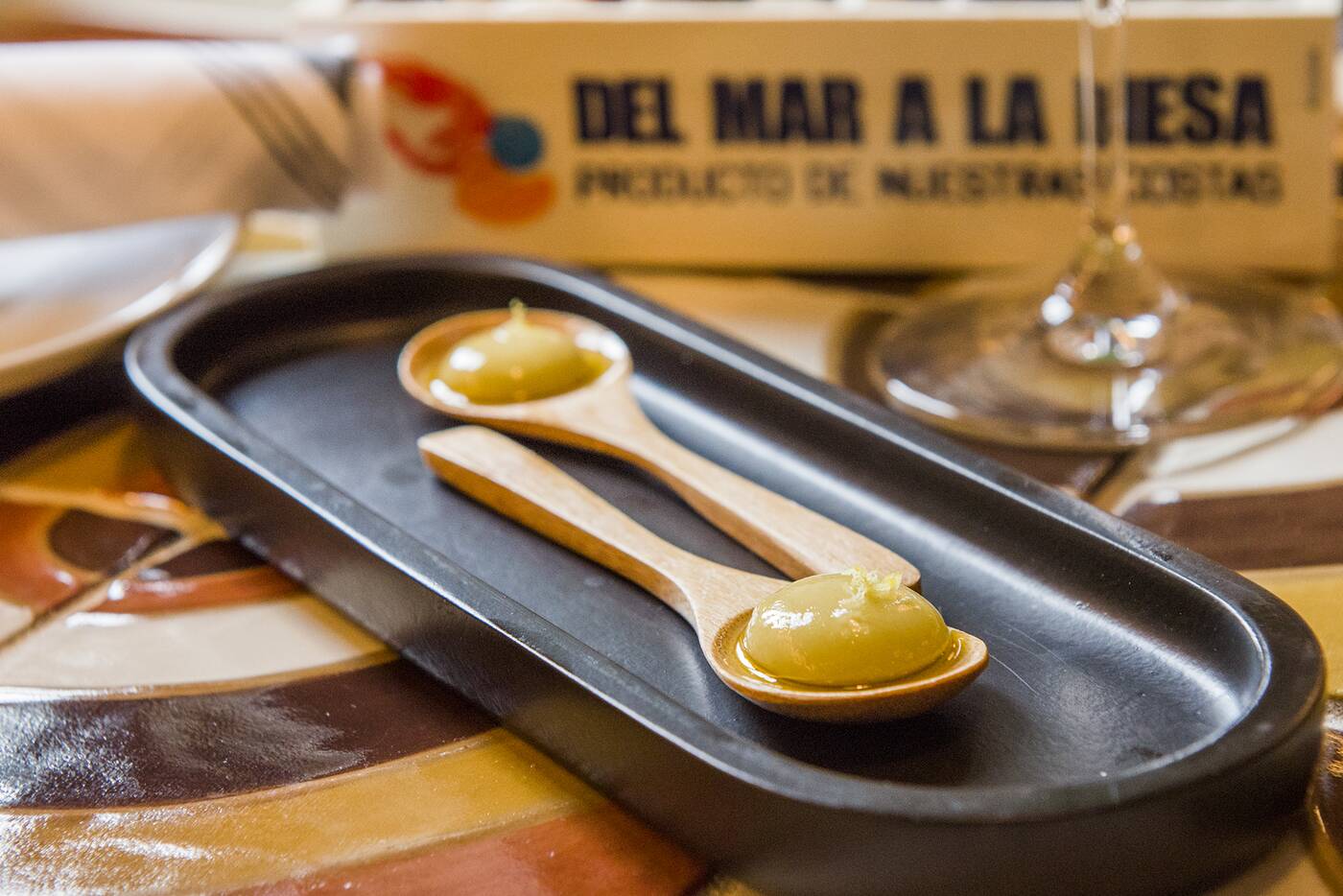 The El Bulli olives ($6) will be the most recognizable Ferra Adria recipe. Made according to the legendary chef's reverse spherification technique, these yolks of queen olive juice are a must order, topped with lemon zest for small slurps of explosive flavour.
The El Bulli olives ($6) will be the most recognizable Ferra Adria recipe. Made according to the legendary chef's reverse spherification technique, these yolks of queen olive juice are a must order, topped with lemon zest for small slurps of explosive flavour.
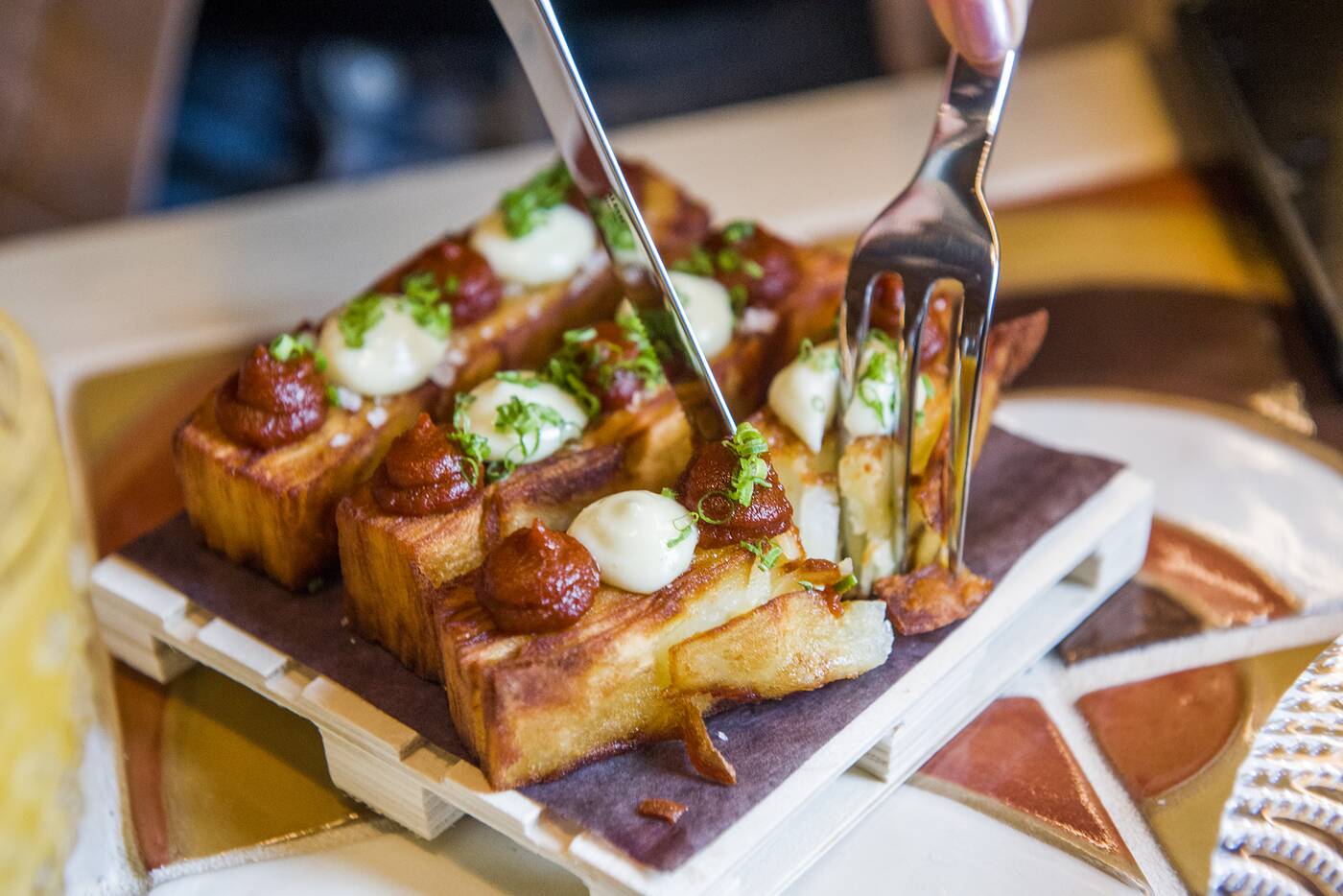 From the De La Huerta — of the garden — section, patatas bravas ($7) are tender and crispy pressed yuca potatos dotted with sriracha brava sauce and wasabi aioli that's structured like the mille-fueille pastry.
From the De La Huerta — of the garden — section, patatas bravas ($7) are tender and crispy pressed yuca potatos dotted with sriracha brava sauce and wasabi aioli that's structured like the mille-fueille pastry.
 A pair of oysters ($9) are sauced with the classic Spanish green gazpacho soup-turned-sauce and does justice to the uncommon marriage of fruit and seafood with pieces of pickled green apples.
A pair of oysters ($9) are sauced with the classic Spanish green gazpacho soup-turned-sauce and does justice to the uncommon marriage of fruit and seafood with pieces of pickled green apples.
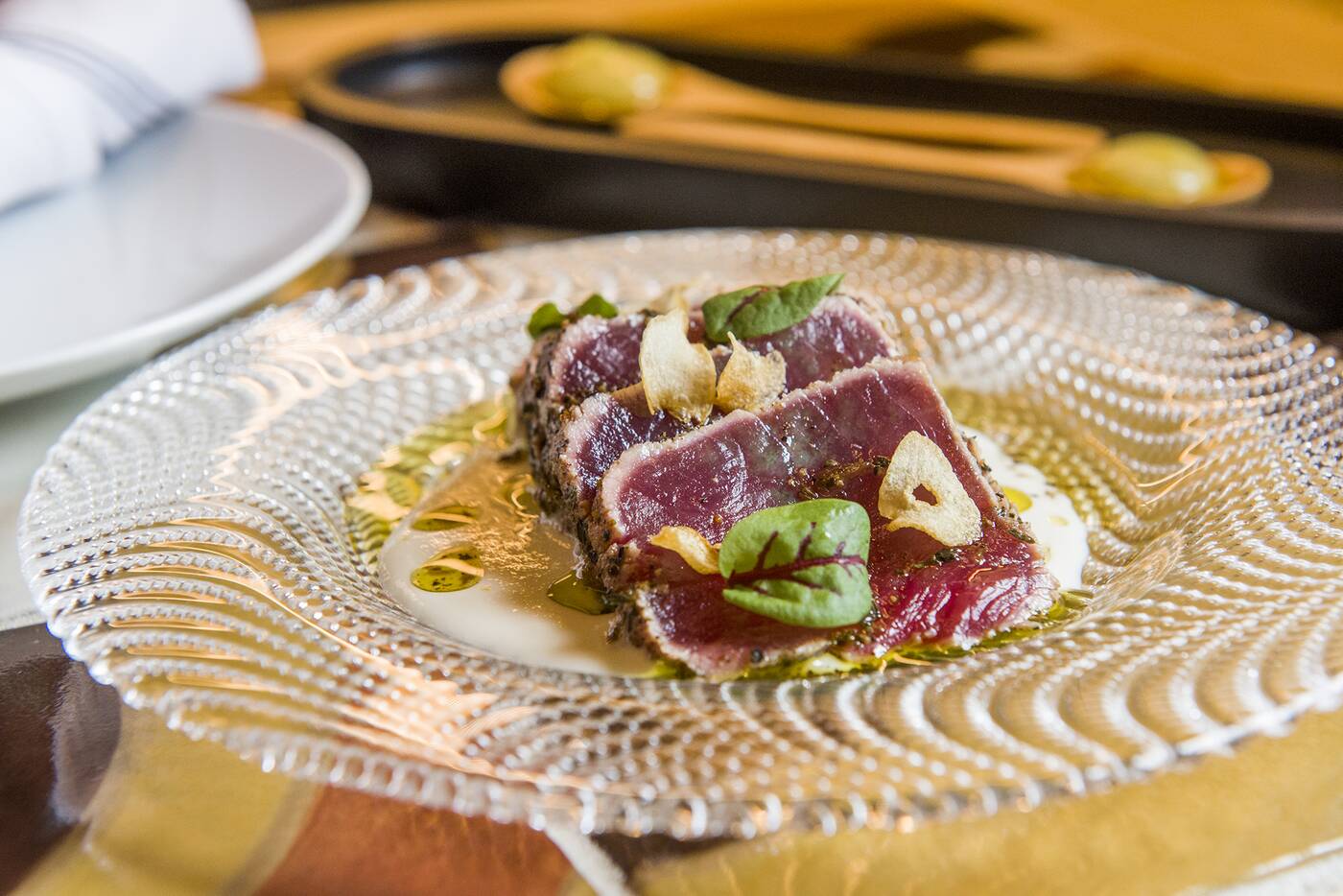 Another cold soup, the summery ajo blanco made of almonds and garlic, is creamified to act as the sauce for the atun rojo ($19): addictive slivers of yellowfin tuna loin marinated in citrus and pepper.
Another cold soup, the summery ajo blanco made of almonds and garlic, is creamified to act as the sauce for the atun rojo ($19): addictive slivers of yellowfin tuna loin marinated in citrus and pepper.
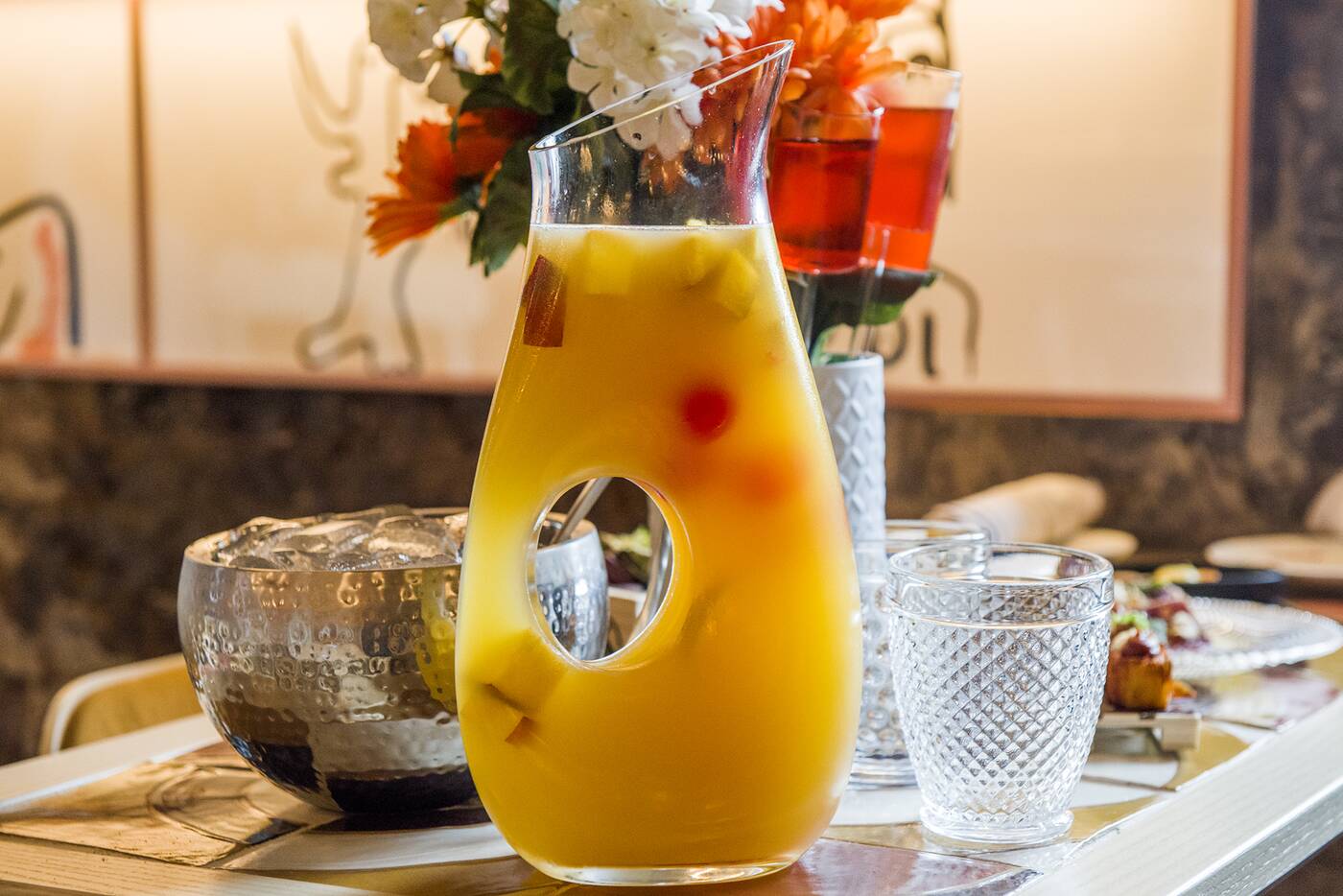 It isn't a Spanish restaurant without sangria. Whether by six oz. glass ($14) or one-litre pitcher ($60), Madrina's sangria is accompanied with a bowl of ice on the side rather than mixed in.
It isn't a Spanish restaurant without sangria. Whether by six oz. glass ($14) or one-litre pitcher ($60), Madrina's sangria is accompanied with a bowl of ice on the side rather than mixed in.
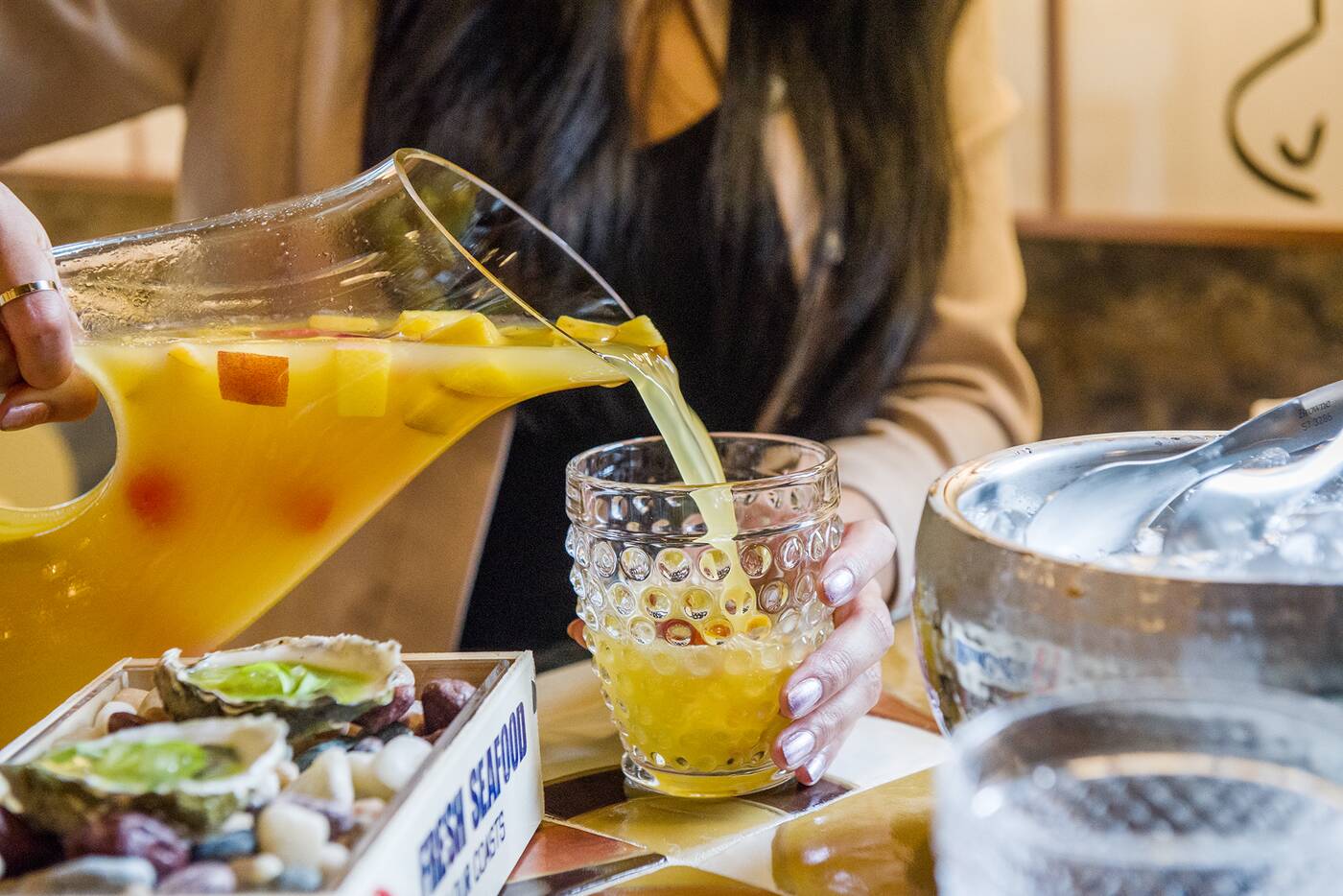 White sangria is a refreshing, not so strong concoction of apricot, house wine, Sprite, watermelon, oranges, and peaches.
White sangria is a refreshing, not so strong concoction of apricot, house wine, Sprite, watermelon, oranges, and peaches.
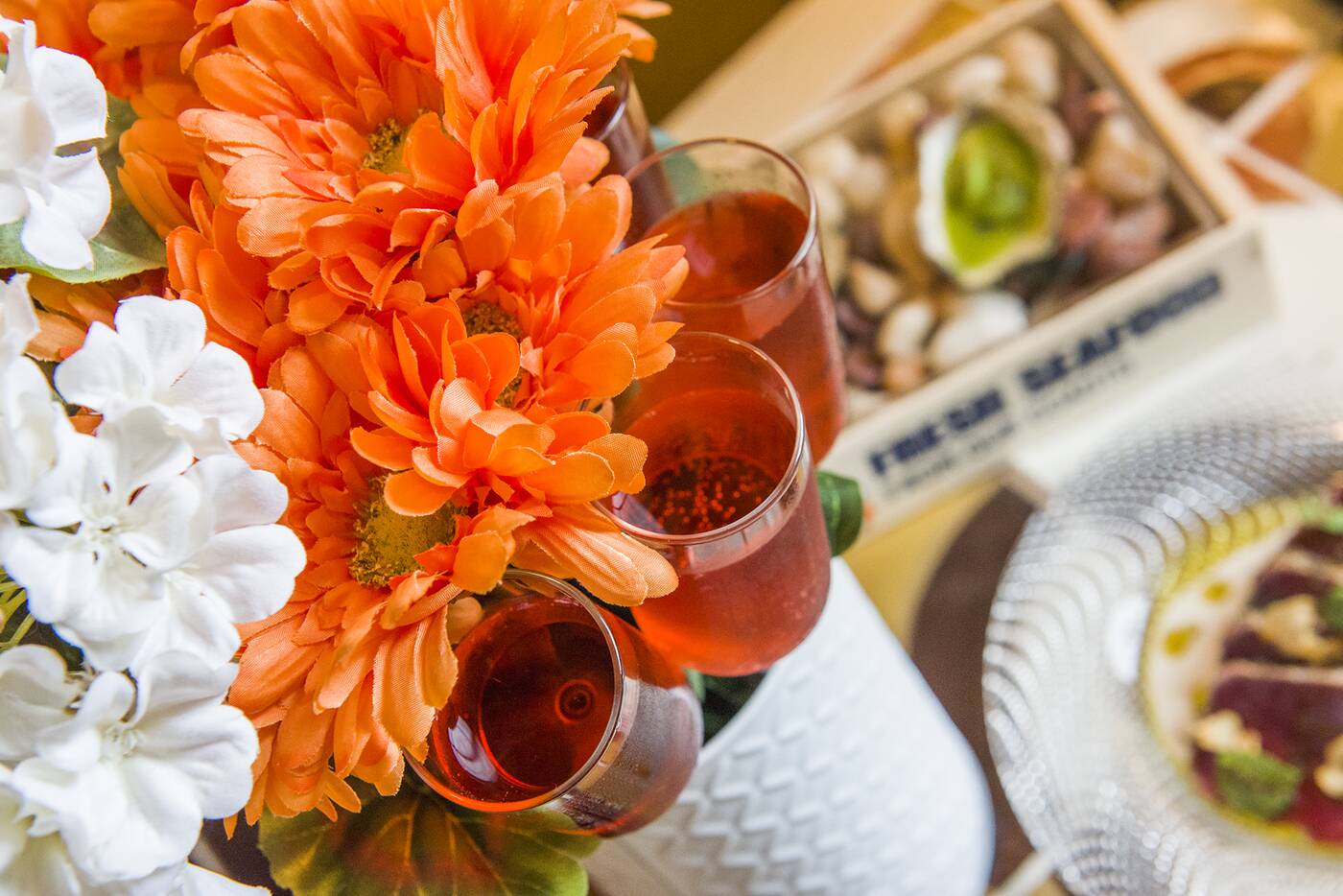 The celebratory carnation is an Instagram-worthy order of drinks that arrive in a bouquet of flowers. One oz. cocktails of apricot, gin and cranberry arrive on stems in orders of two ($15) or four ($28), or $7.50 each.
The celebratory carnation is an Instagram-worthy order of drinks that arrive in a bouquet of flowers. One oz. cocktails of apricot, gin and cranberry arrive on stems in orders of two ($15) or four ($28), or $7.50 each.
 And in another ode to Adria, the arimula gimlet ($14), a drink of arugula, lime juice, Rivas gin, fresh-cracked pepper.
And in another ode to Adria, the arimula gimlet ($14), a drink of arugula, lime juice, Rivas gin, fresh-cracked pepper.
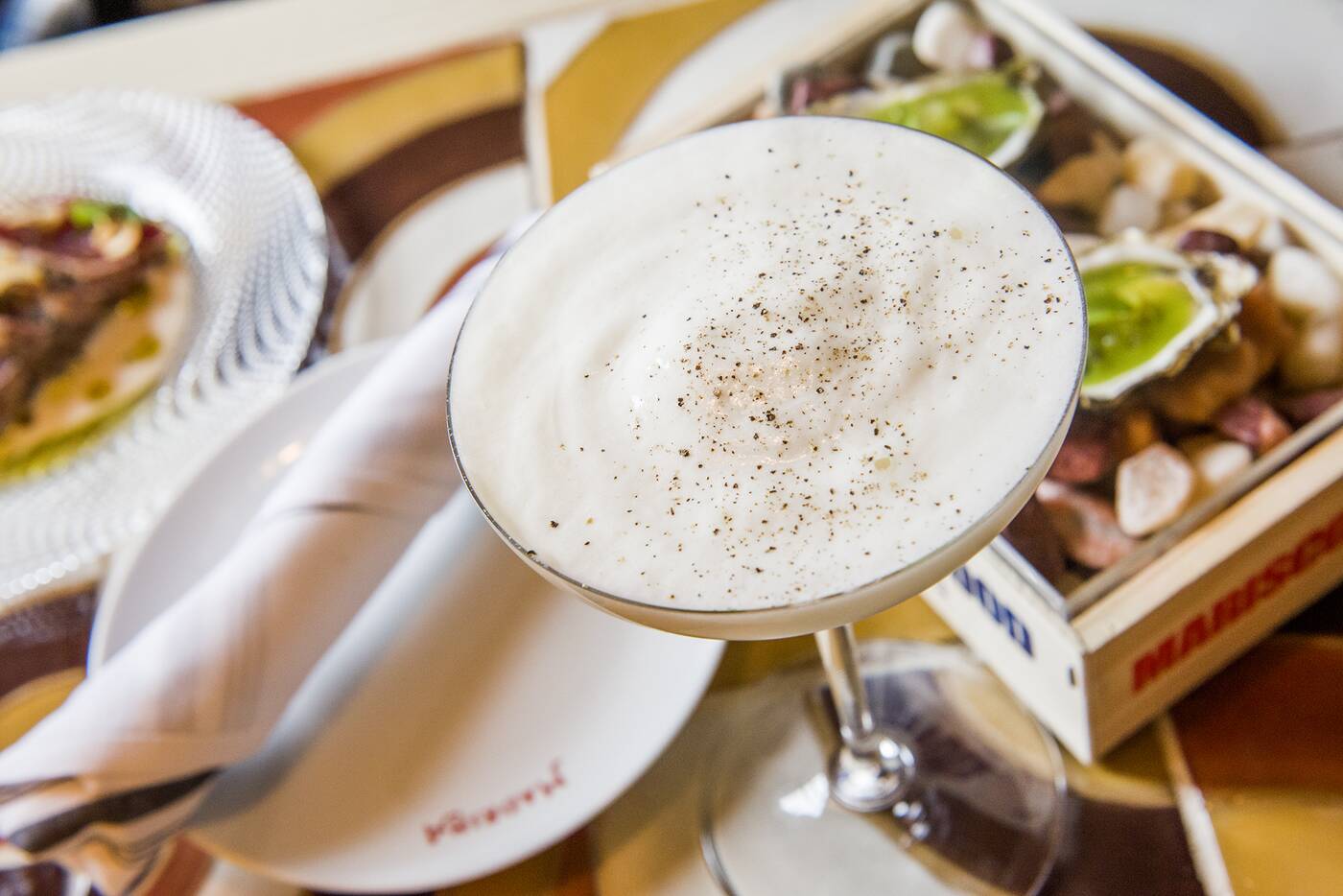 The light drink is topped with Adria's signature espuma, the culinary foam for which he was famous for. Under the eye of the beverage manager Andrew Thisby, this thyme espuma is a noteworthy ode.
The light drink is topped with Adria's signature espuma, the culinary foam for which he was famous for. Under the eye of the beverage manager Andrew Thisby, this thyme espuma is a noteworthy ode. 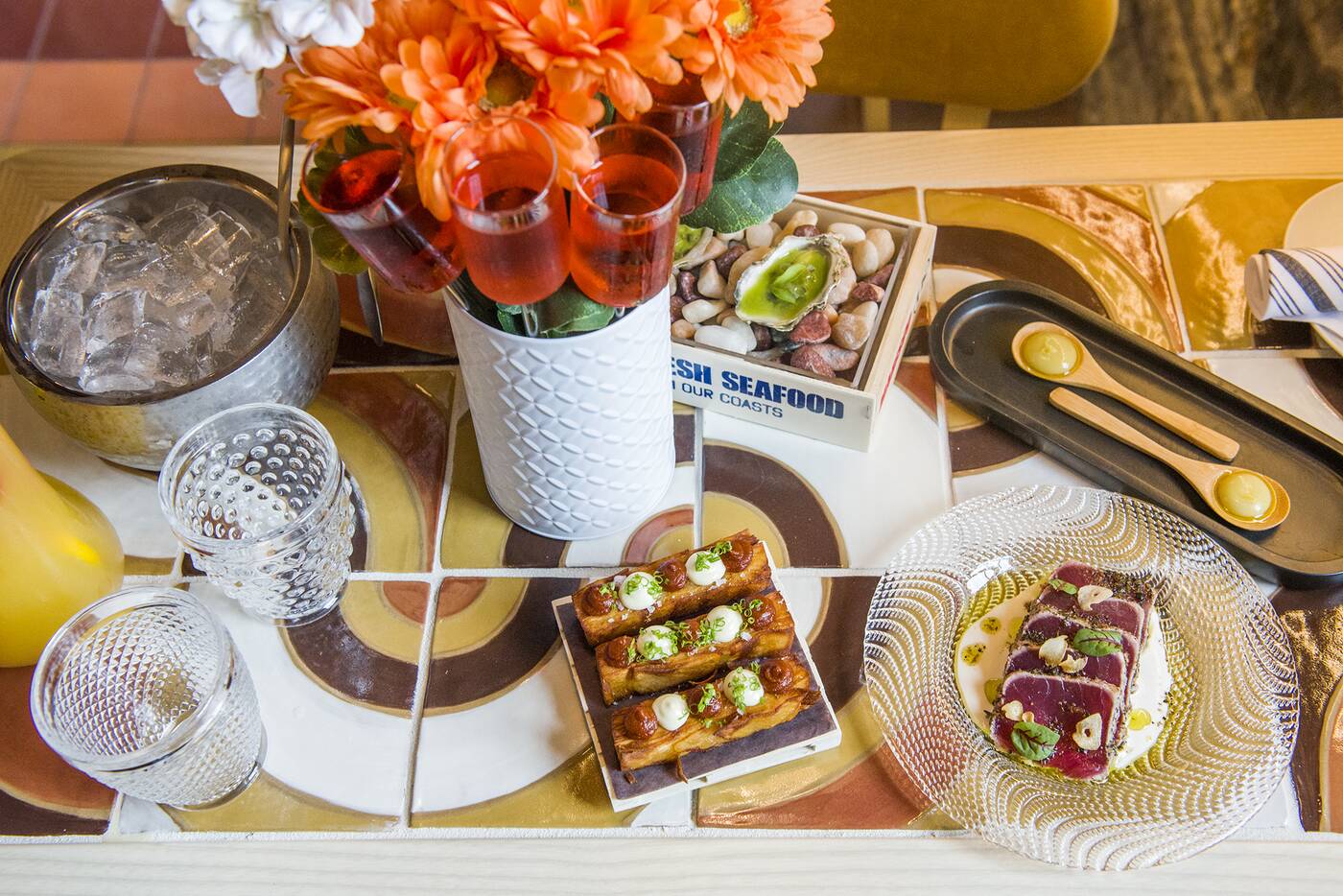
Madrina's pull may just be strong enough to lure out the locals who err by avoiding the Distillery for insular reasons. With a summertime terrace pending arrival and a menu of tapas rarities, it's worth feeling like a tourist in your city for a taste of Catalan.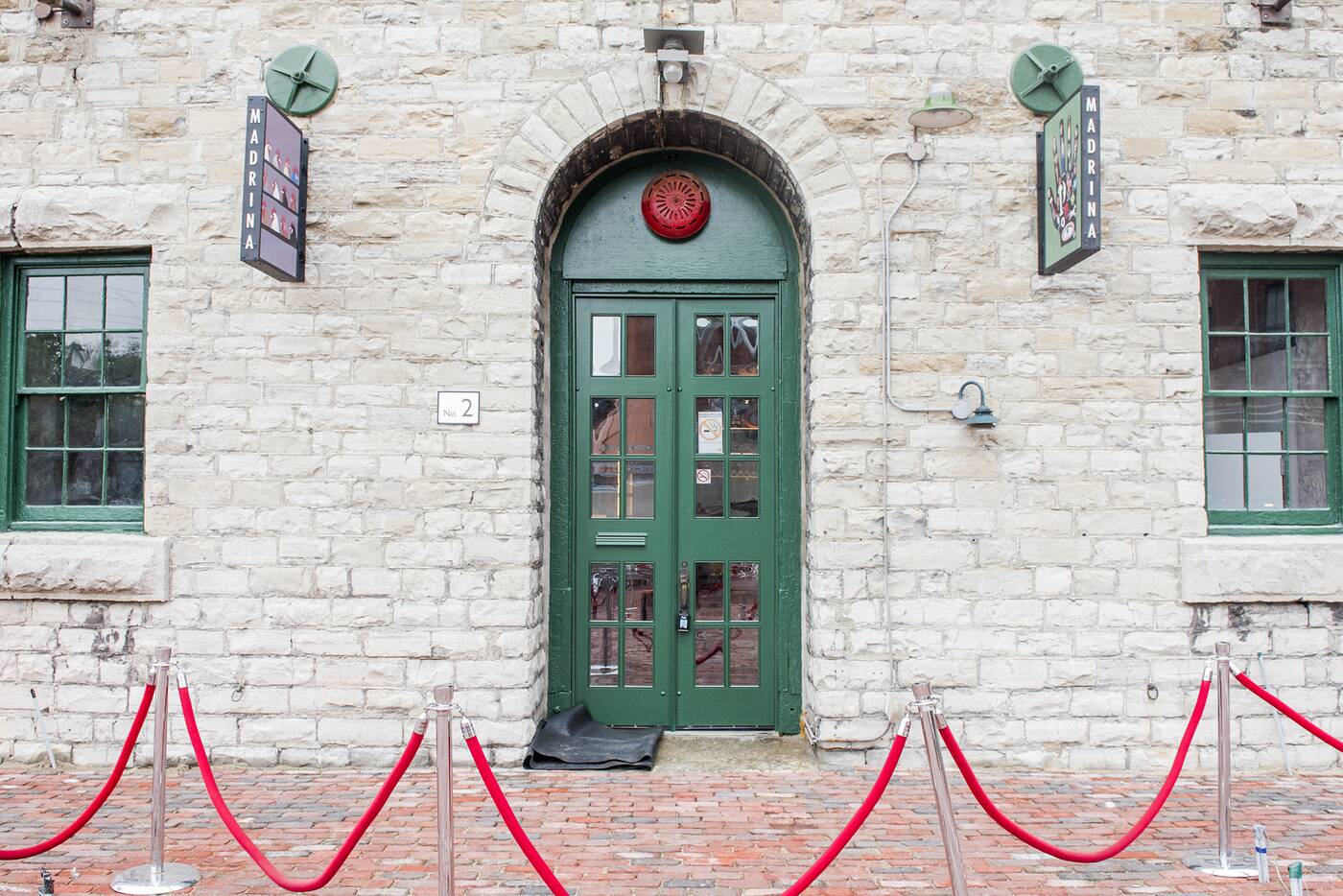
Hector Vasquez










